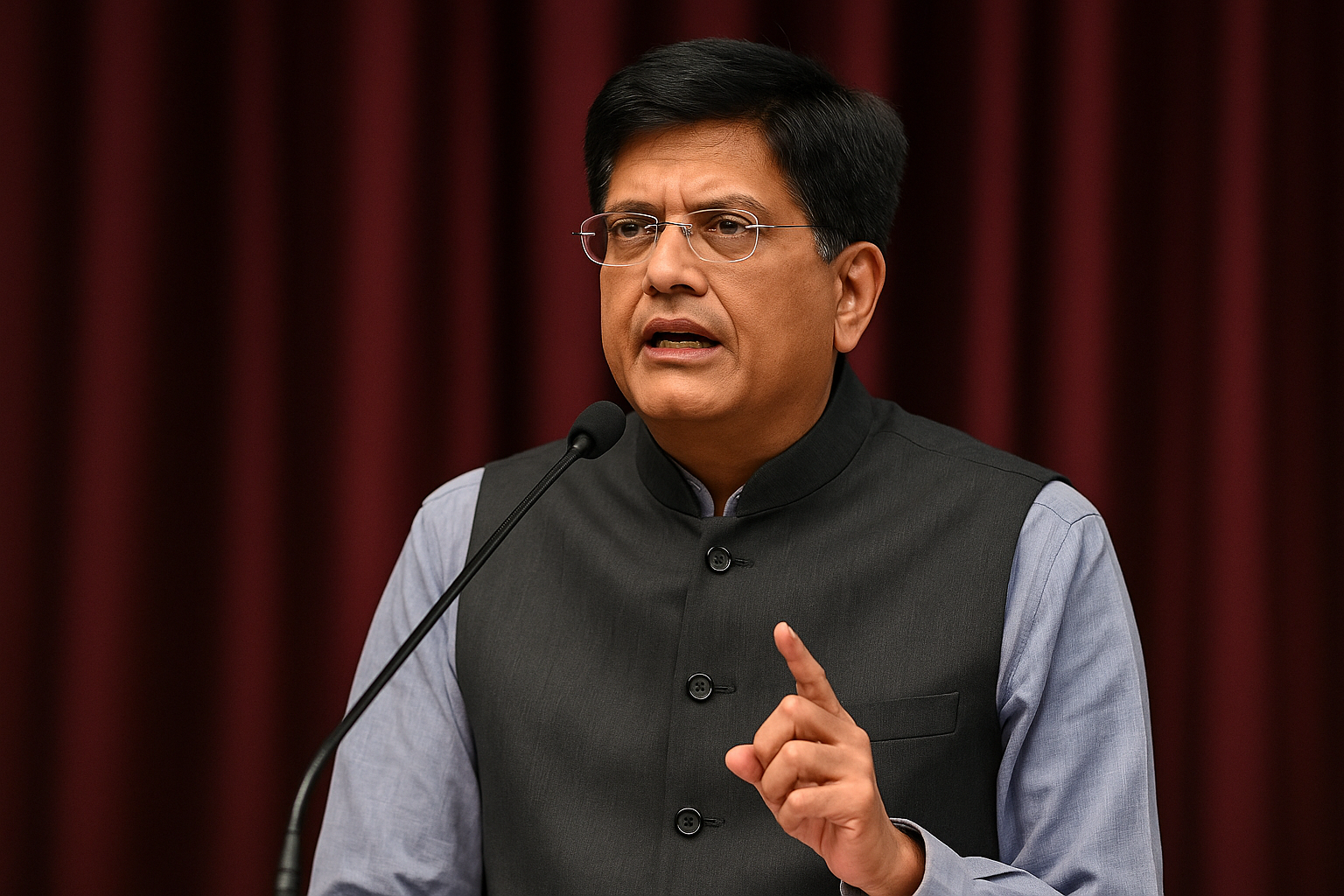26% Tariff Threat: Why Piyush Goyal Is Reinforcing ‘Make in India’ Now
Introduction: India Takes a Firm Stand in Trade Talks with US
As the India-US Trade Talks 2025 hit new roadblocks, Commerce Minister Piyush Goyal has taken a firm stance, reiterating India’s commitment to protecting national interests and strengthening the Make in India initiative. Amid growing tensions over tariff hikes, agriculture, and automobile imports, Goyal stated that any future trade deal must protect India’s national economic interest.
In an address to local traders in Srinagar, Goyal clearly stated that Free Trade Agreements (FTAs) must be mutually beneficial, and that India would not agree to one-sided arrangements.
“Trade must work both ways. You can’t ask India to open its markets while blocking our exports,” Goyal emphasized.
1. What’s Next for India in the India-US Trade Talks 2025?
India has consistently maintained that FTAs must support local manufacturing and employment. As part of that commitment, Goyal stated that any trade agreement—whether mini or full-scale—will be made with full consideration of India’s core interests.
He added:
“Traders in Jammu & Kashmir and across India should not worry. We will only sign deals that strengthen Indian businesses.”
The government continues to champion both ‘Vocal for Local’ and ‘Make for the World’ as pillars of its manufacturing-led growth strategy.
🏭 2. Make in India Gets Renewed Focus Amid Global Headwinds
Goyal’s recent comments serve as a strong signal that the government is using the India–US trade talks as an opportunity to promote local manufacturing, not weaken it. Sectors such as textiles, footwear, pharmaceuticals, and automobiles are central to India’s export economy and job creation goals.
This renewed push aligns with India’s broader policy focus:
Scale local industry
Reduce import dependency
Strengthen rural employment
🔁 3. India Plans Tariffs on US Goods After Recent Hikes
On June 4, 2025, India formally notified the World Trade Organization (WTO) of its plan to impose retaliatory tariffs on selected US-origin products. This was in direct response to the United States raising import duties on automobiles and auto components.
India’s move is aimed at:
Leveling the playing field
Pressuring the US into fairer tariff terms
Protecting domestic sectors from trade shocks
If talks fail, India could enforce duties that mirror the US’s 26% auto tariffs on Indian exports.
🧪 4. Key Issues Blocking the India–US Trade Deal
Despite progress in certain areas, several sticking points remain between the two nations:
Issue India’s View US Demand GM crops & dairy imports Highly sensitive; prefers restrictions Wants broad access for US farm/dairy goods Auto tariffs Seeks rollback/exemption Increased duties to protect US jobs Indian exports Wants reduced tariffs on textiles/leather No firm concessions yet Negotiators met in Washington from June 27 to early July, but the talks concluded without a deal. Both sides are now racing to meet the July 9 deadline.
⏳ 5. What’s Next: Will India Avoid the 26% Tariff Hit?
The US has made it clear that if a trade deal is not finalized by July 9, new tariffs will take effect on August 1. These could significantly hurt India’s key export sectors—especially textiles, leather, and auto parts.
According to US President Donald Trump, countries that don’t meet the deadline will receive “take it or leave it” letters, outlining reciprocal tariffs. These letters will reportedly be sent to 10–12 countries, including India.
🤝 Political Push May Be Needed
Experts suggest that only a direct intervention from Prime Minister Narendra Modi and President Trump can break the current deadlock. A mini-deal, covering limited but high-impact issues, could still be on the table if both leaders act swiftly.
Meanwhile, India continues to prepare for a full Bilateral Trade Agreement (BTA) scheduled for negotiation later this year.
🧠 Summary: 5 Key Takeaways from Goyal’s Trade Remarks
India won’t sign FTAs that don’t offer equal benefit.
‘Make in India’ remains central to trade policy.
India will retaliate against US tariffs if needed.
GM crops, dairy, and auto duties are deal breakers.
Without compromise, Indian exports face 26% tariffs from August.
🏁 Conclusion: India Holds Its Ground in Tough Talks
With little time left before the deadline, India remains firm. The India-US Trade Talks 2025 could either bring relief to exporters or escalate into a tariff-driven standoff. Piyush Goyal’s stance reflects a broader shift in India’s global economic policy—where self-reliance, fairness, and strategic clarity take precedence over short-term gains.
As negotiations continue, Indian exporters, investors, and the global business community will be watching closely. The outcome of these talks could reshape the future of India–US trade relations in 2025 and beyond.
Source: Moneycontrol
Suggestions: Public Sector Bank Recruitment 2025: Great Opportunity with 50,000 Vacancies in SBI, PNB

2 Comments